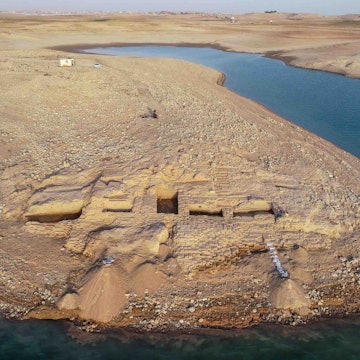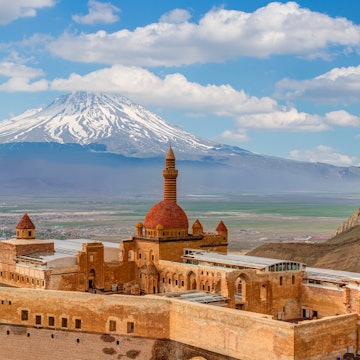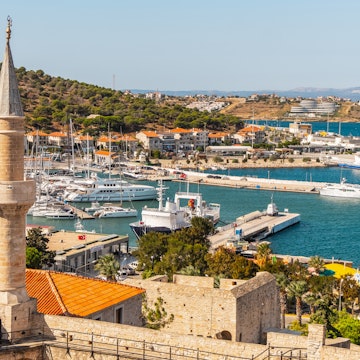

The ancient library of Ephesus is an incredible sight. VSenturk/Shutterstock
From ancient Greek and Roman cities to Neolithic settlements and worship sites, Türkiye is full of dazzling remnants of the far-distant past, representing civilizations both storied and little-known. The country's coastlines, forests and mountains are so rich in history that no “best of” list could fully capture every special place but each of these dozen sites scattered around the country is a real standout.
1. Ephesus
Greco-Roman glory
Deservedly one of the top attractions in all of Türkiye, the extensive and well-preserved ruins of Ephesus retain the grandeur of the ancient city’s glory days, with its 25,000-seat theater, extravagantly decorated terraced houses, marble streets and the towering, statue-adorned remains of what was once the third-largest library in the world.
How to get there: Ephesus is 60km (37 miles) south of İzmir airport and 20km (12.4 miles) northeast of Kuşadası. A handful of daily trains run from İzmir airport to Selçuk, about 3.5km (2.2 miles) from Ephesus. The İzban (local light rail) runs more frequently, but you’ll have to transfer in Tepeköy to get to Selçuk. It’s a five-minute walk from Selçuk’s train station to its bus station, where you can catch a minibus to the lower gate of the ancient city. Minibuses to Ephesus also run regularly from Kuşadası, departing from a stop near the corner of Adnan Menderes Bulvarı and Candan Tarhan Bulvarı on the edge of the city center.
2. Pergamon
A lofty acropolis
With its hilltop acropolis and theater dramatically built into the steep slopes overlooking the modern city of Bergama, Pergamon was known in ancient times for its healing center, awe-inspiring temples and monumental altar. The latter’s friezes were taken away to Germany in the late 19th century and are now installed at Berlin’s Pergamonmuseum.
How to get there: Pergamon is 130km (80.7 miles) north of İzmir airport. To reach it by public transport, take city bus number 204 from the airport to İzmir’s bus station, where various private companies operate services to Bergama. A cable car (teleferik) runs from the northeast edge of Bergama city center up to Pergamon’s acropolis.

3. Göbeklitepe
The roots of religion
Dating all the way back to nearly 10,000 BCE, the massive stone pillars at Göbeklitepe, many carved with animal figures, are believed to mark the world’s first place of worship. The site’s discovery in 1994 revolutionized ideas of how human civilization developed; subsequent excavations in the area have revealed a whole group of similar Neolithic sites, including nearby Karahan Tepe.
How to get there: Göbeklitepe is 40km (25 miles) south of Şanlıurfa’s airport and 20km (12.4 miles) northeast of its city center, with hourly public buses departing from the Archaeological Museum.
4. Çatalhöyük
One of the world’s oldest cities
Some 9500 years ago, thousands of people lived in Çatalhöyük’s densely packed settlement, where they entered their houses from the roofs and buried their dead under the floors. A high-tech and interactive new visitor center next to the excavation areas does a fine job of bringing the otherwise cryptic ruins to life.
How to get there: Çatalhöyük is 60km (37 miles) southeast of Konya’s airport and 40km (25 miles) southeast of its city center, with no public transport to the site. The closest you can get is the hourly bus from Konya to the town of Çumra, which is 13km (8 miles) by taxi to Çatalhöyük.

5. Hattuşa
The Hittite capital
During the Bronze Age, the Hittites presided over a vast kingdom from this huge but now lonely and evocative site, ringed by impressive defensive walls guarded by statues of sphinxes and lions. Start your tour of Hattuşa with a visit to the museum in neighboring Boğazkale and don’t miss the ceremonial rock carvings at nearby Yazılıkaya.
How to get there: Hattuşa is 90km (56 miles) southwest of Çorum but the closest major airport is in Ankara, 200km (124 miles) to the west. There is no public transport to the site.
6. Titus & Vespasian Tunnel
An engineering marvel
At the base of the Nur Mountains near the eastern Mediterranean coast, a pair of 1st-century Roman emperors commissioned this stunning feat of engineering, a 1380m-long (4528ft) water diversion tunnel carved through solid rock. The tunnel is located within the ruins of ancient Seleucia Pieria, which include a complex of 100 Roman-era rock tombs.
How to get there: The Titus and Vespasian Tunnel is 30km (18.6 miles) southwest of Antakya; to reach it by minibus, transfer in Samandağ for Çevlik.
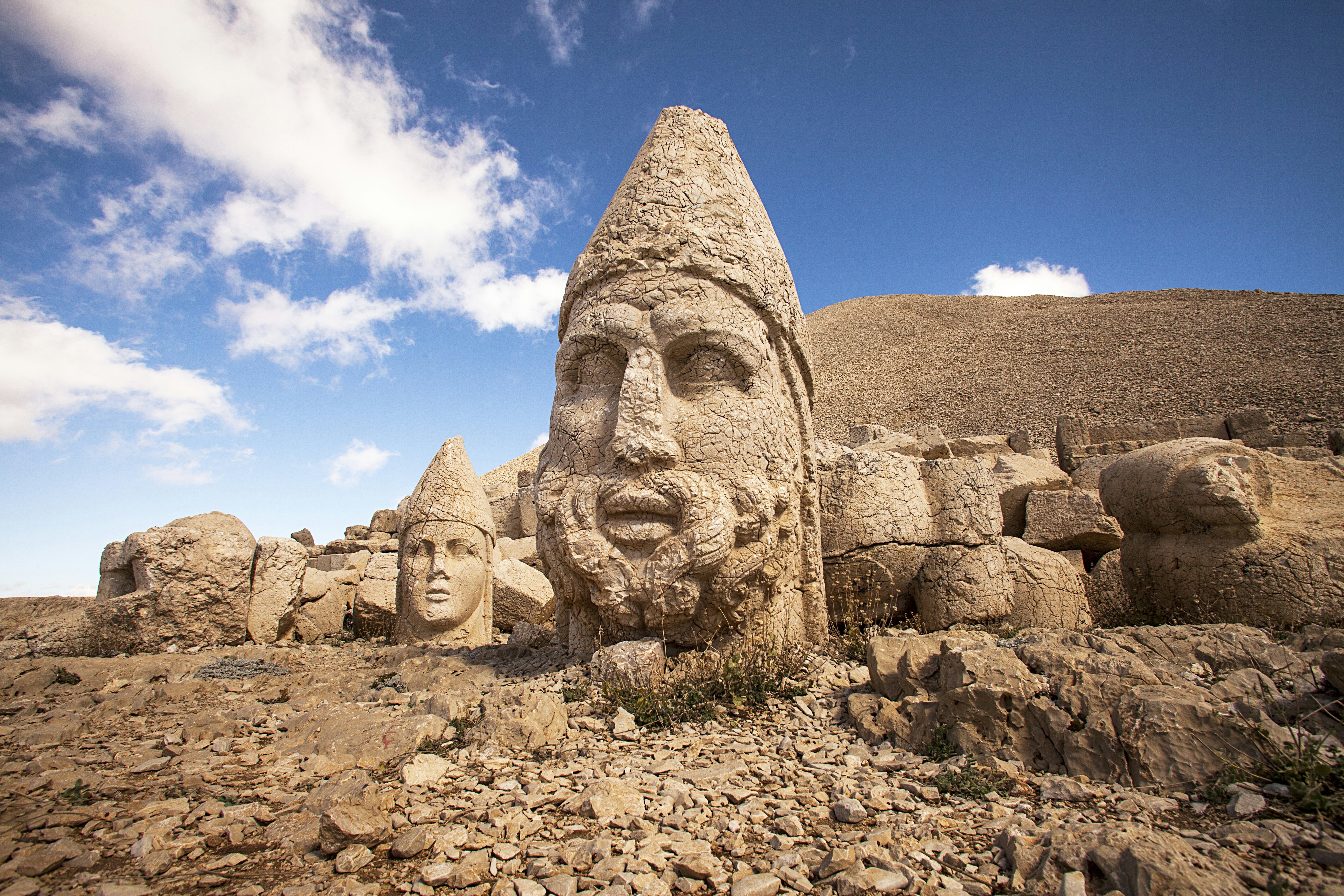
7. Nemrut Dağı
Mountaintop monuments
High in the mountains of eastern Türkiye sit the remote statues of Nemrut Dağı, giant heads of gods surreally detached from their enthroned bodies by long-ago earthquakes. They were built on the order of Antiochus I, the 1st-century BCE King of the Greco-Iranian Commagene Kingdom, who humbly had a likeness of himself installed amongst the pantheon.
How to get there: Nemrut Dağı is 80km (50 miles) northeast of Adıyaman and 95km (59 miles) southeast of Malatya; tours to the summit can be arranged from both cities. Public transport only goes as far as Kahta, a town near the base of the mountain.
8. Aphrodisias
Home to the marble masters
In antiquity, Aphrodisias was a famed center for marble sculpture, with many of its artisans’ masterful, surprisingly lifelike works displayed in the on-site museum at the beautifully bucolic ruins of this ancient city. The vast 30,000-seat stadium and the monumental gateway to the Temple of Aphrodite for which the settlement was named are especially impressive.
How to get there: Aphrodisias is 125km (77.6 miles) west of Denizli Airport; tours are often arranged as part of a visit to the travertines at Pamukkale, 100km (62 miles) to the northeast. Public transport to the site is not easy, requiring multiple transfers. A cheaper alternative to a tour is the van service that runs once a day from Pamukkale if there are enough passengers; inquire at your hotel or one of the local travel agencies for details.
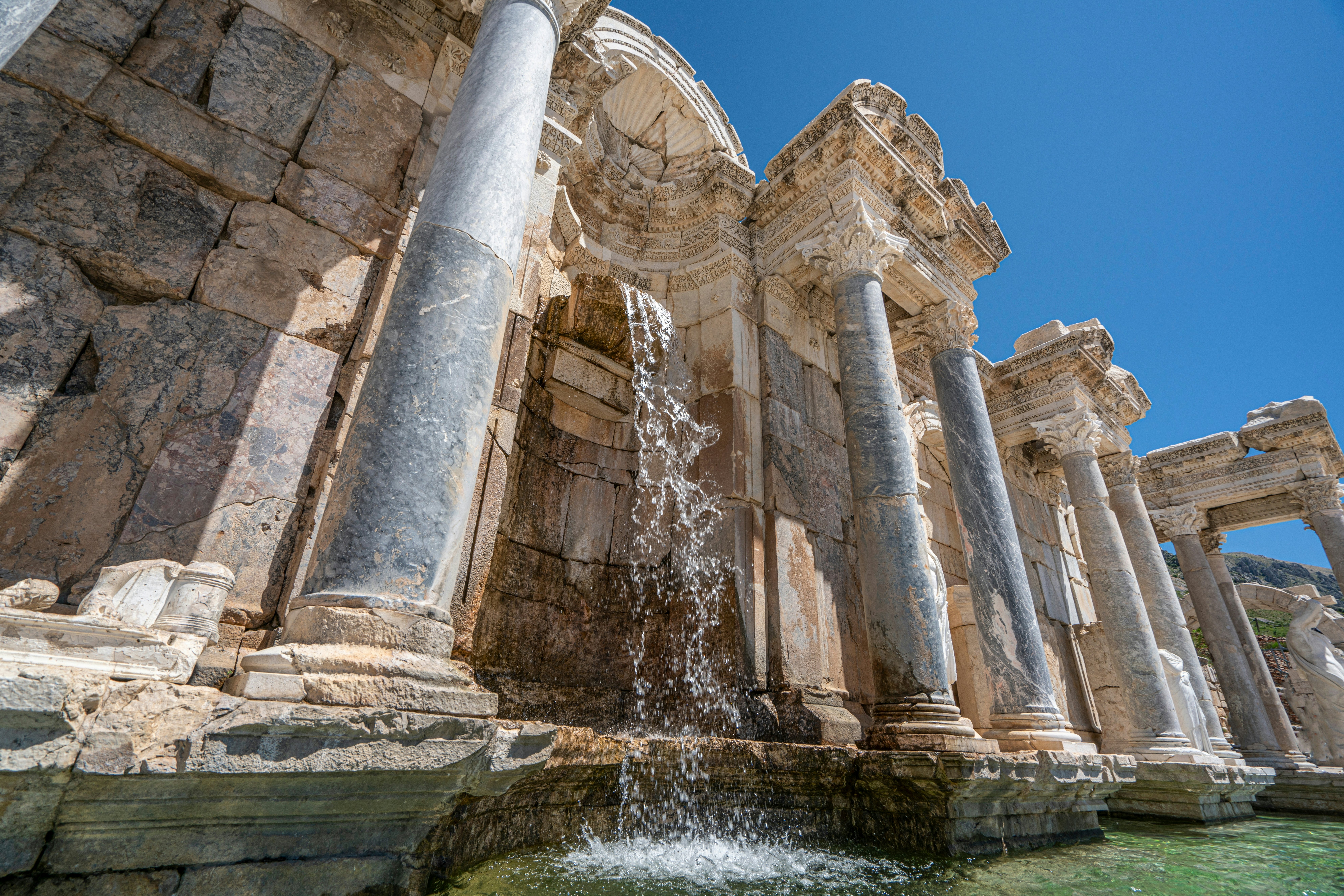
9. Sagalassos
A well-preserved city
The lavishly decorated Antonine Nymphaeum, a monumental fountain that has been impressively restored to working order, is the centerpiece of this sprawling site dramatically located in rural mountains. The ruins of Sagalassos encompass all aspects of ancient life, from grand temples and public squares to communal baths, private homes and pottery workshops, as well as the fortified walls and burial grounds on its outskirts.
How to get there: Sagalassos is 75km (46.6 miles) southeast of Isparta’s airport. To reach it using public transport, take one of the Gülkent cooperative buses to the bus station in Isparta city center, then a minibus or taxi to the Isparta “köy garaj” (village garage 2km/1.2 miles away), then one of the Ağlasun Minibüs Kooperatifi minibuses that run every hour or so to Ağlasun village. The Sagalassos site is 7km (4.3 miles) uphill from the village, so unless you’re a keen walker you’ll need to get a taxi. Alternatively, Sagalassos is a 120km (74 miles) drive north from Antalya. Private bus companies make the 2½-hour trip from Antalya bus station to Isparta every few hours.
10. Dara
Past intertwined with present
The ruins of the 6th-century Roman city of Dara are scattered amidst the modern village of the same name, with one especially dramatic underground cistern located beneath a villager’s modest house. A large complex of rock-cut tombs and an ancient water treatment system are among the other impressive archaeological remnants.
How to get there: Dara is 50km (31 miles) southeast of Mardin City and 35km (21.7 miles) east of Mardin Airport; there is no public transport to the site.
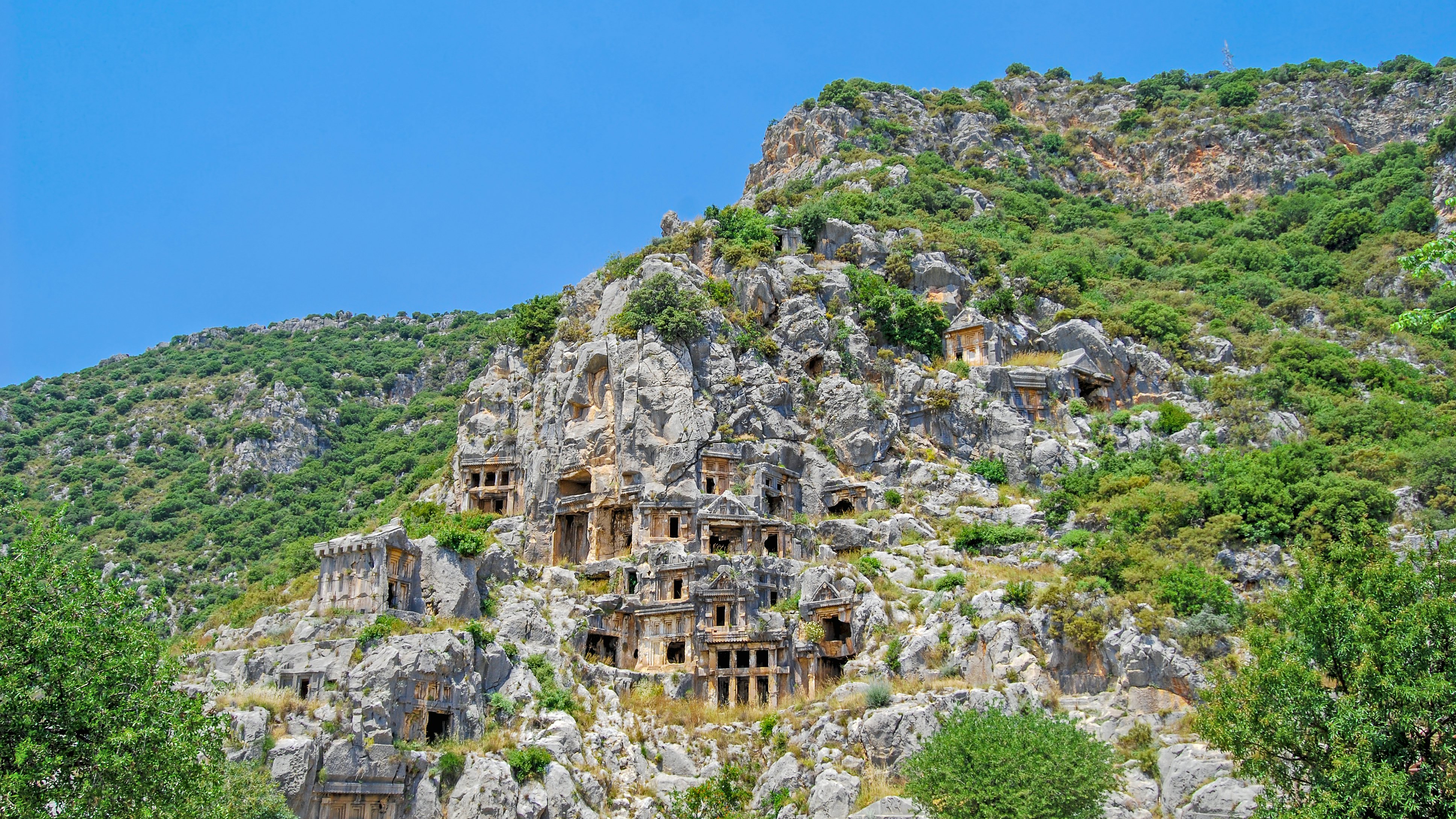
11. Rock Tombs of Myra
A multi-story city of the dead
Perhaps the finest example of the distinctive Lycian rock tombs scattered around the western Mediterranean coast is the multi-story complex at Myra, whose apartment-style configuration vividly illustrates the idea of a necropolis being a “city of the dead.” Carved theatrical masks connected to the adjacent Roman theatre add to the drama.
How to get there: The Myra ruins are 2km (1.2 miles) north of Demre City, which is 140km (87 miles) southwest of Antalya. Minibuses run from Antalya’s bus station to Demre every hour or so.
12. Olympos
Pretty pirates’ hideaway
It’s hard to imagine a prettier setting for an ancient city than the ruins of Olympos, which sprawl through the woods and along a stream that runs through a lush valley before meeting the sea at one of the country’s finest beaches. The settlement was a haven for pirates before being captured by the Romans in the 1st century BCE.
How to get there: Olympos is 80km (50 miles) southwest along the coast from Antalya. Minibuses from Antalya stop at the Olympos Kavşağı (junction) on the main road, which is about 11km (6.8 miles) from the ruins and beach; taxis usually wait at the junction.








